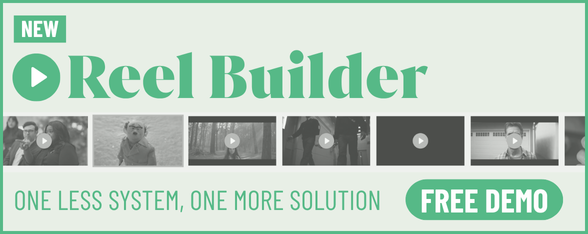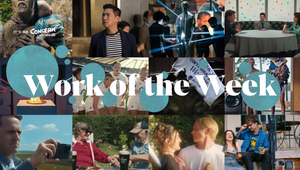
The Influencer Agency That Was Built by Accident

(Pictured left to right: Arron, Nick and Harry)
Arron Shepherd is confident in his business. “We are the leading influencer agency,” he asserts. As co-founder and ‘chief storyteller’ at The Goat Agency, he’s made himself familiar with the influencer marketing landscape and is happy to invite challenges to that claim based on staff count, revenue, billings, number of influencers paid - you name the metric.
To date, Goat has worked with over 70,000 influencers on over 1,000 campaigns and employs 125 people globally across offices in London, New York, Singapore and Monaco. In December the agency received its first investment, but the company was founded in 2015. Arron, along with co-founders Harry Hugo and Nick Cooke, built the business month by month to this point. The strange thing is that they never had a plan to get here.
“We accidentally built the biggest influencer agency in the world,” says Harry, chief campaigns officer. He’s surprised himself as he reflects on their story, because none of them had ever worked at an influencer agency.
The three founders started at Arron’s previous business, the sports social network Sportlobster, which he founded in 2012. He hired Harry the day he got his A-level results, aged 18. His job was to run social campaigns and Nick was head of marketing. So the three of them amounted to the people who ran Sportlobster’s ad spend.
Their goal was to acquire users and they experimented with how their communications could help them do that. They found it a frustrating process. Arron says they hired and fired seven of the major PR companies in the space of eight months. “They all promise and then two weeks in you realise it’s complete lies and out they go,” he says. They were spending hundreds of thousands of pounds trying to attract users and not getting the results they expected.
Harry, being a young person who moved in young people circles, knew a guy with 100,000 followers who spoke about football on social media. They gave him £10 to join Sportlobster and tell people about it. “It was influencer marketing but no one had used that word then,” says Arron. It drove 2000 downloads of the app. They’d paid Cristiano Ronaldo to post about them the day before and that had generated about the same. As you can imagine, Cristiano’s fee was a bit more than £10.
They were hooked on the results that influencer marketing could deliver. So they did more of it. Soon, the three of them were starting to see that not all influencers are born equal. After using 100 influencers they saw that around 20 had absolutely killed it, 50 or 60 had been OK, and the other 20 or 30 had failed or had fake audiences. “The problem is, when you look at those 100 people, they all look the same,” says Arron. So they started to sift through and sort them according to how they performed, building a database of effective influencers.
Eventually the Sportlobster team turned to the only influencer agency that they could find back then to see if they could scale this success. To their shock, the agency didn’t deliver anything like what it promised. It dawned on Arron that the data they had was already richer than anybody else’s. “That was the Goat lightbulb, when we realised there’s some value here,” he says.
In 2015 the trio left Sportlobster having used over 3,000 sport influencers to build its user base. They had enough data to strike out on their own. They started The Goat Agency and began reaching out to clients who could put their resources to use. Their model was new - they wouldn’t represent influencers like a talent agency, they wouldn’t use celebrities or people with broad influence like publishers and they weren’t offering software for clients to do the marketing themselves - Goat would stay completely neutral, using data through its unique CRM system and campaign experience to ensure it’s always using the most effective influencers in order to hit clients KPI’s.
They started with other brands that wanted downloads. That was what they knew how to deliver. And because they came from a client background, they only quoted on results - the number of downloads, not likes or impressions or anything vague. “People weren’t buying fluffy agency stuff. They weren’t buying our time,” says Harry. “They were buying what we could deliver.”
Eventually Goat took on clients that wanted different results - views, app downloads, product purchases and new members, but never anything wooly. “Our ethos from the beginning was ‘what if we’re just the agency that delivers?’ Our unique selling point is the fact that we do what we say we’re going to do,” says Harry.
Soon their database grew and through trial and error Goat was able to work with clients outside of sports. “We’re selling nappies in Mexico at the same time as football boots across Asia, at the same time as LIDL products across the UK,” says Arron.
Arron is keen to stress that Goat’s roots in a brand helped them to build an influencer agency that works efficiently. They had no agency experience, which means they had no preconceptions about how things should work based on what works in other channels. “To unlearn that and start again is very difficult, if not impossible, for some people,” he says. “Most people are trying to incrementally change their business in order to suit this channel, but this channel is so different that you’ve got to start again.”
Thanks to the way Goat promises results, they can build research into their model and refine their database as they help their clients. It’s simple trial and error, says Harry. “We knew we could guarantee deliverables for brands that would take about 80% of our non-margin cost. Which meant that we had 20% to play with every time. We could trial new people and get paid to do it.”
They could have not spent that 20% researching and made more money in the short term, but decided to try and understand the market better instead, which is how their database of influencers has grown.
Over the years Goat has learned what worked and what didn’t. What sorts of influencers work for which clients, approaches to creative, choice of copy, channels, calls to action, time between posts… Now Goat has a data and insights team looking at trends across all of these on every project.
It’s all quite straightforward really. “There should be a load of other agencies like us doing the work,” says Arron. “The reason there aren’t is because everybody [else] has a different model. They didn’t do the trial and error. It’s a data game. Most people here understand the data.”
Influencer marketing is a young industry and Goat is trying to build the definitive model. “We came into it when it was a mess. No one really knew what they were doing. No one really knew how it was going to function as an industry,” says Harry.
“We had to write everything from the beginning,” says Arron.
But having a solid bank of data and four years of delivering results, learning from each campaign, has made Goat confident that they’ve got the formula. “I don’t think we’re perfect or always get everything right. But we do it every day,” says Arron. “We tell people how we do it: we know data. We did a massive amount of trial and error and have used 70,000 people. It’s not rocket science. It’s a simple business we’ve built. But it’s difficult to replicate.”















